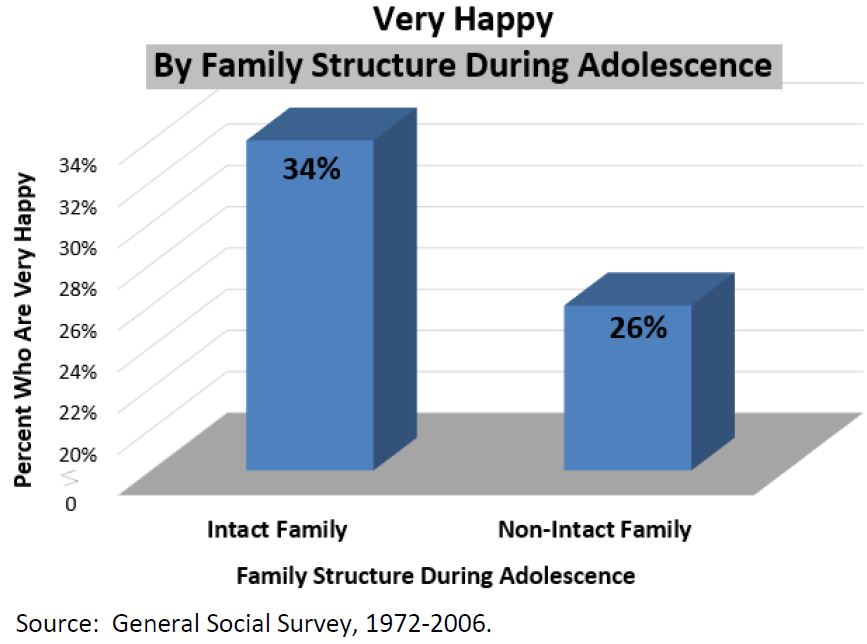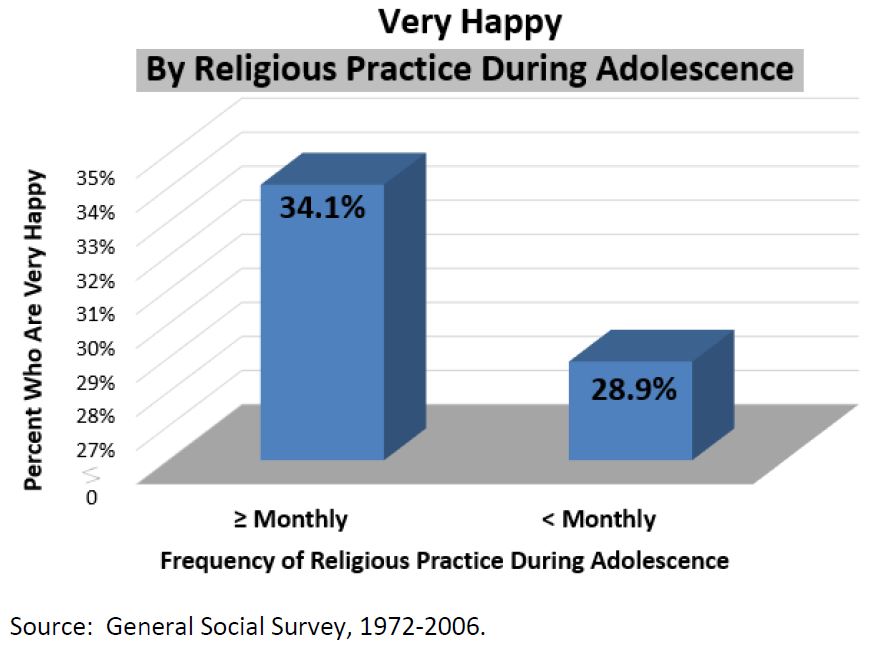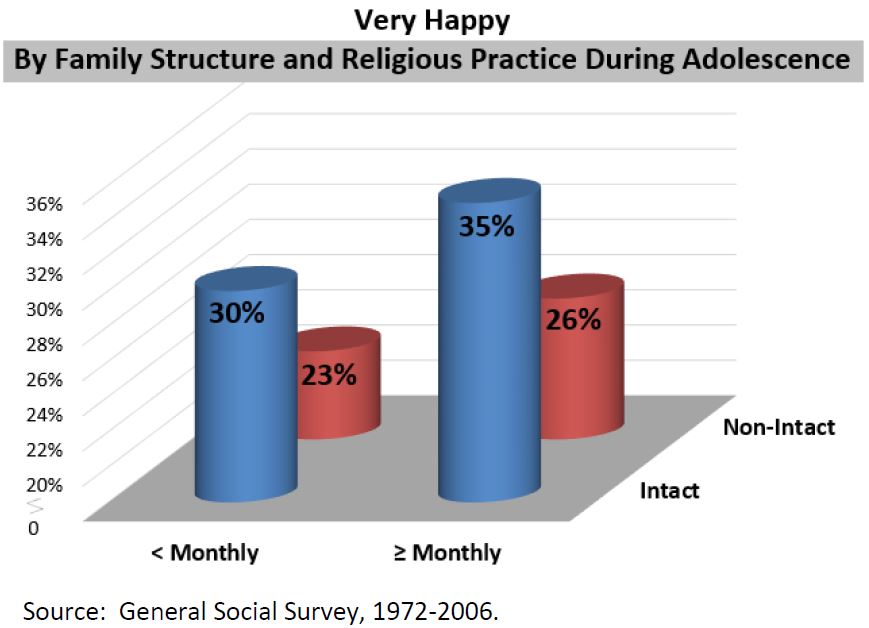Click Here to download “Happiness by Family Structure and Religious Practice”
Happiness by Family Structure and Religious Practice
Family Structure: According to the General Social Survey, 34 percent of adults who lived in an intact family as adolescents considered themselves very happy, compared to 26 percent of those who lived in a non-intact family. Religious Practice: The 1972-2006 General Social Survey shows that 34.1 percent of adults who attended religious services at least monthly as adolescents considered themselves very happy, compared to 28.9 percent of adults who attended worship less than monthly as adolescents.
Religious Practice: The 1972-2006 General Social Survey shows that 34.1 percent of adults who attended religious services at least monthly as adolescents considered themselves very happy, compared to 28.9 percent of adults who attended worship less than monthly as adolescents.
 Family Structure and Religious Practice Combined: About 35 percent of adults who attended religious services at least monthly and lived in an intact family through adolescence considered themselves very happy, compared to 23 percent of adults who attended religious services less than monthly and lived in a non-intact family as adolescents. In between were those who had attended religious services at least monthly but lived in a non-intact family (26 percent) and those who lived in an intact family but attended religious services less than monthly (30 percent).
The combination of frequent religious attendance during adolescence and an intact family background clearly increases the likelihood of being very happy in adulthood. The data indicate, however, that family structure may have a more pronounced effect than religious attendance.
Family Structure and Religious Practice Combined: About 35 percent of adults who attended religious services at least monthly and lived in an intact family through adolescence considered themselves very happy, compared to 23 percent of adults who attended religious services less than monthly and lived in a non-intact family as adolescents. In between were those who had attended religious services at least monthly but lived in a non-intact family (26 percent) and those who lived in an intact family but attended religious services less than monthly (30 percent).
The combination of frequent religious attendance during adolescence and an intact family background clearly increases the likelihood of being very happy in adulthood. The data indicate, however, that family structure may have a more pronounced effect than religious attendance.
 Related Insights from Other Studies: Very few studies have examined contemporaneous effects of both religious attendance and family structure on happiness, let alone intergenerational effects, but these studies generally support the direction of these findings. Arthur Brooks of Syracuse University reported that while “practicing a religion makes people very happy, on average,” married people are “nearly twice as likely as singles” to report being very happy.[1]
In a study of Caribbean adolescents, Robert Blum of the University of Minnesota and colleagues found that adolescents who report having religious beliefs and connectedness with their parents are less likely to experience rage.[2]
Though the evidence demonstrates that an intact family may have a greater influence than religiosity on the likelihood of being very happy, the combination of frequent religious attendance and an intact family yields the highest proportion of very happy people, as adolescents and adults.
[1] Arthur Brooks, Gross National Happiness (New York: Basic Books, 2008): 28, 30, 217, 227.
[2] Robert Blum, et al., “Adolescent Health in the Caribbean: Risk and Protective Factors,” American Journal of Public Health, vol. 93 (2003): 456-460.]]>
Related Insights from Other Studies: Very few studies have examined contemporaneous effects of both religious attendance and family structure on happiness, let alone intergenerational effects, but these studies generally support the direction of these findings. Arthur Brooks of Syracuse University reported that while “practicing a religion makes people very happy, on average,” married people are “nearly twice as likely as singles” to report being very happy.[1]
In a study of Caribbean adolescents, Robert Blum of the University of Minnesota and colleagues found that adolescents who report having religious beliefs and connectedness with their parents are less likely to experience rage.[2]
Though the evidence demonstrates that an intact family may have a greater influence than religiosity on the likelihood of being very happy, the combination of frequent religious attendance and an intact family yields the highest proportion of very happy people, as adolescents and adults.
[1] Arthur Brooks, Gross National Happiness (New York: Basic Books, 2008): 28, 30, 217, 227.
[2] Robert Blum, et al., “Adolescent Health in the Caribbean: Risk and Protective Factors,” American Journal of Public Health, vol. 93 (2003): 456-460.]]>
